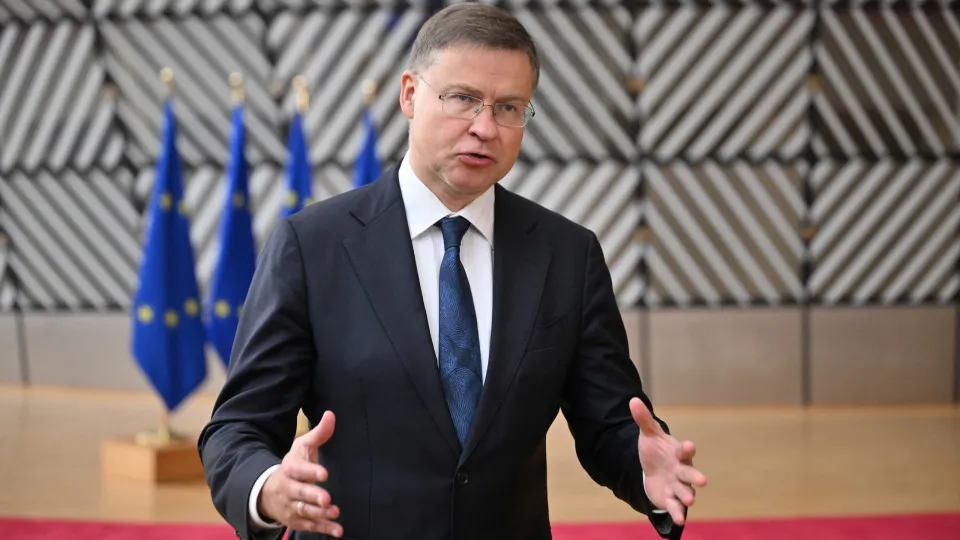
“I am pleased to announce that we have achieved a significant breakthrough – the Eurogroup has reached a political agreement on the institutional framework for setting the cap and holding limits, ensuring an appropriate role for both the Council and the European Central Bank [ECB],” stated Valdis Dombrovskis, the European Commissioner for Economy.
Speaking at a press conference following the Eurogroup meeting ahead of the informal gathering of European Union (EU) finance ministers in Copenhagen under Denmark’s rotating presidency, he added, “This agreement gives new impetus to efforts to reach a common approach in the Council by the end of the year.”
Eurogroup President Paschal Donohoe clarified that ministers discussed “the procedure for the limits and not the limits themselves,” with the Danish presidency now tasked to examine “all the details.”
Following this initial approval, the goal is to reach a common position among EU countries by the end of the year, allowing the Council to begin negotiations with the Parliament.
The exact holding limits, or how much digital currency individuals can hold, are yet to be defined. Low limits might not be attractive, while high limits could threaten financial stability.
The European Commission proposed the legislative package on the digital euro two years ago, but the decision rests with the member states, with the virtual currency being developed by the ECB.
In attendance, ECB President Christine Lagarde explained that this represents a “starting point for work that will continue.”
“The digital euro is not just a means of payment, but also a political statement about Europe’s sovereignty,” concluded Christine Lagarde.
This morning, upon arrival at the meeting, Paschal Donohoe emphasized the “growing urgency” of creating a digital euro within the single currency area, hoping for “broad consensus” to advance the legislative process in the EU.
The aim is for the digital euro to compete with online payment services like PayPal or Apple Pay from the United States or China’s Alipay.
These retail payment technology platforms, predominantly from the United States and China, are expected to account for 40% of e-commerce and 27% of in-store payments in Europe by 2027.
Currently, the ECB is preparing for the creation of this digital euro.
Since the start of the pilot project in 2021, the central bank has been developing methodology and limitations, creating a handbook, and finalizing technical aspects.
By the end of 2025, the ECB Council is to decide whether to proceed to the next phase of the project.
This concerns a legislative package unveiled by the European Commission in June 2023 to advance this new offering within the European Union while safeguarding the usage of cash euros.
As part of this package, the institution proposed a digital euro to be available like cash, cards, or apps, and to function as a digital wallet through which citizens and businesses can make payments anytime and anywhere within the eurozone.
Similar to cash, the digital euro will be the responsibility of the ECB, which will decide if and when to issue this virtual version of the single currency.
A digital currency is an asset similar to cash that is stored or exchanged through online systems managed by the central bank.
[News updated at 12:11]




